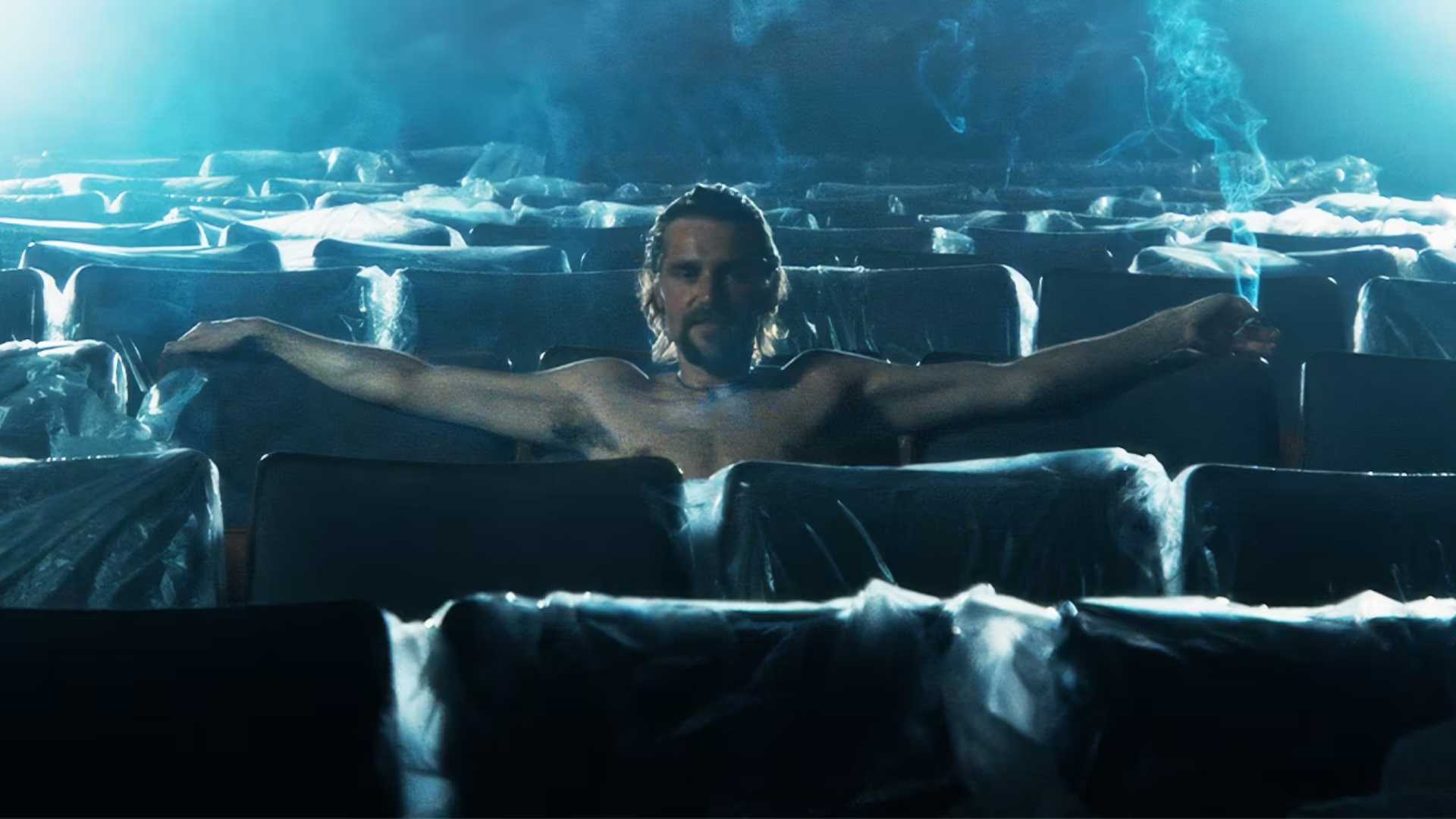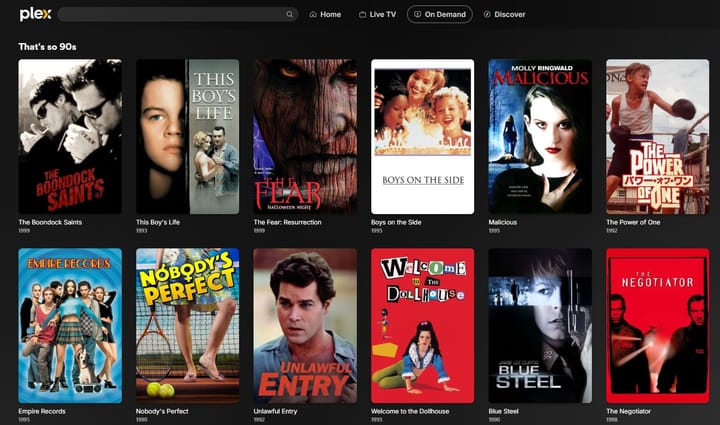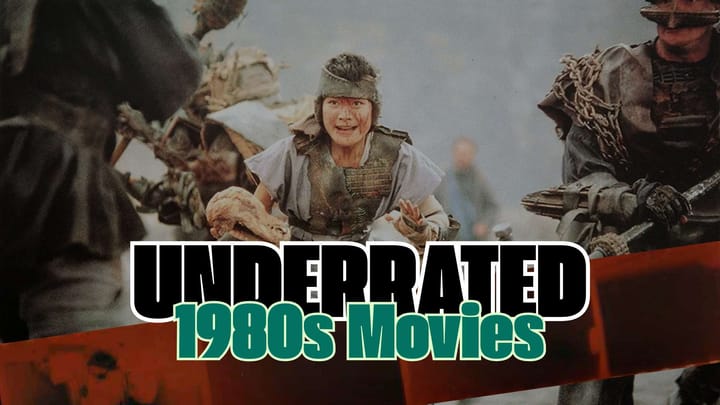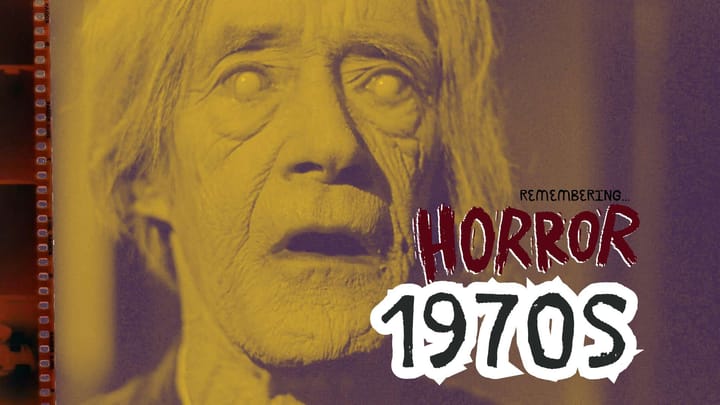Neo-Noir: A Journey Through Cinema's Shadowy Underbelly from the 70s to Today

Hey there, film buffs! Richard here, your friendly neighbourhood movie critic with a passion for all things noir. Today, we're diving headfirst into the gritty, morally ambiguous world of neo-noir. Buckle up, because this isn't just another rundown of films you've seen a million times before.
Sometimes it's easier to listen:
What's This All About?
Before we plunge into the smoky, neon-lit streets of neo-noir, let's set the stage. In this article, we're going to:
- Trace the evolution of neo-noir from its birth in the early 70s to today
- Explore how neo-noir emerged and why it captivated audiences
- Spotlight the directors who shaped the genre
- Dive into the films that defined neo-noir, including some hidden gems you might've missed
- Check out how neo-noir has evolved in the 21st century
- Ponder why this genre continues to fascinate us today
Whether you're a noir newbie or a hardboiled aficionado, there's something here for everyone. Ready to take a walk on the dark side? Let's dive in!
Neo-Noir: A Brief History
Picture this: it's the late 60s, and Hollywood is changing. The classic noir films of the 40s and 50s are starting to feel a bit... well, old hat. But then, some clever filmmakers had an idea: "What if we took that noir style and gave it a modern twist?"
And just like that, neo-noir was born.
The film that really kicked things off? Chinatown in 1974. Man, when I first saw that film, it knocked my socks off. It had all the classic noir elements – the hard-boiled detective, the femme fatale, the labyrinthine plot – but it felt fresh, you know? It wasn't just rehashing old tropes; it was doing something new with them.
From there, neo-noir exploded. The 70s gave us gritty, paranoid thrillers. The 80s brought neon-soaked streets and blurred the lines between noir and other genres. And the 90s? That's when neo-noir really hit its stride, with filmmakers pushing the boundaries of what the genre could be.
The Masters of Shadow: Directors Who Shaped Neo-Noir
Now, let's talk about the folks who really defined this genre. These directors didn't just make neo-noir films; they showed us what neo-noir could be.
- Roman Polanski: Gave us the neo-noir bible with Chinatown (1974). The way he captures the sun-baked corruption of 1930s Los Angeles is just chef's kiss. Polanski's ability to blend classic noir elements with contemporary filmmaking techniques sets the standard for neo-noir.
- Martin Scorsese: Taxi Driver (1976) is like a fever dream of alienation and urban decay. Scorsese's gritty realism and deep dive into the psyche of troubled characters became a hallmark of neo-noir. And let's not forget Goodfellas (1990)—not strictly noir, but man, does it nail that moral ambiguity.
- David Lynch: Oh boy, David Lynch. His films are like stepping into a beautiful, terrifying dream. Blue Velvet (1986) peels back the facade of small-town America to reveal something dark and pulsing underneath. Lynch's surrealist approach to noir themes opened up new possibilities for the genre.
- The Coen Brothers: These guys blend noir with dark comedy like nobody's business. Blood Simple (1984) is a twisted tale of infidelity and murder that announced their arrival on the scene. Their ability to infuse noir with quirky characters and offbeat humour brought a fresh perspective to the genre.
- Ridley Scott: Brought noir into the future with Blade Runner (1982). The neon-soaked streets of future L.A. are pure neo-noir eye candy. Scott showed us that noir themes could work just as well in a sci-fi setting, expanding the genre's boundaries.
- Michael Mann: Nobody does stylish crime thrillers like Mann. Thief (1981) is a masterclass in mood and atmosphere, and Heat (1995)? That's just pure cinema, folks. Mann's slick visual style and focus on professional criminals became a Neo-Noir staple.
- Quentin Tarantino: Redefined cool with Pulp Fiction (1994). It's like he took all the elements of noir and put them in a blender. The result? Pure cinematic adrenaline. Tarantino's non-linear storytelling and pop culture-infused dialogue brought noir to a new generation.
- Curtis Hanson: Gave us the neo-noir masterpiece L.A. Confidential (1997). It's a love letter to classic noir that still feels thoroughly modern. Hanson showed that period neo-noir could be just as gripping as its contemporary counterparts.
- Abel Ferrara: Not afraid to push boundaries. Bad Lieutenant (1992) is a descent into hell that'll stay with you long after the credits roll. Ferrara's unflinching look at corruption and redemption brought a raw edge to neo-noir.
- David Fincher: Brings psychological depth to noir with films like Se7en (1995) and Gone Girl (2014). Nobody does "dark and twisted" quite like Fincher. His meticulous visual style and exploration of the darker sides of human nature have become synonymous with modern neo-noir.
The Classics: Films That Defined Neo-Noir
Alright, time for the heavy hitters. These are the films that, in my humble opinion, really capture what neo-noir is all about:
- Chinatown (1974): The granddaddy of neo-noir. Polanski's masterpiece is a twisty tale of corruption that'll leave you reeling.
- Taxi Driver (1976): Scorsese's portrait of a disturbed loner in a decaying New York City is haunting and unforgettable.
- Blade Runner (1982): Noir meets sci-fi in Scott's visually stunning exploration of what it means to be human.
- Blue Velvet (1986): Lynch's suburban nightmare is beautiful, disturbing, and utterly mesmerising.
- L.A. Confidential (1997): A pitch-perfect noir set in 1950s Hollywood. The cast is killer, the plot is twisty, and the dialogue crackles.
- Blood Simple (1984): The Coen Brothers' debut is a nasty little tale of infidelity and murder gone wrong.
- Heat (1995): Mann's epic crime drama is a masterclass in tension and atmosphere.
- Pulp Fiction (1994): Tarantino's non-linear crime epic redefined cool for a new generation.
- The Usual Suspects (1995): Who is Keyser Söze? This twisty thriller will keep you guessing until the very end.
- Se7en (1995): Fincher's grim tale of two detectives on the trail of a serial killer is not for the faint of heart.
- Miller's Crossing (1990): The Coen Brothers' homage to gangster films is stylish, complex, and darkly funny.
- Reservoir Dogs (1992): Tarantino's debut is a tight, tense thriller that announced a major new talent.
- Fargo (1996): The Coens blend noir with Midwestern nice to create something uniquely off-kilter.
- Thief (1981): Mann's debut is a neon-soaked story of a professional safecracker trying to go straight.
- Body Heat (1981): A steamy neo-noir that updates the femme fatale for a new era.
- Klute (1971): Jane Fonda shines in this paranoid thriller about a detective and a call girl.
- Night Moves (1975): Gene Hackman stars in this melancholy tale of a private eye in over his head.
- Manhunter (1986): Before Silence of the Lambs, there was this stylish thriller from Michael Mann.
- The Last Seduction (1994): Linda Fiorentino is unforgettable as one of the most ruthless femme fatales in noir history.
- Bad Lieutenant (1992): Ferrara's uncompromising look at a corrupt cop's quest for redemption is a neo-noir gut punch.
Hidden Gems: Lesser-Known Neo-Noir Masterpieces
Now, here's where it gets interesting. These films might not be household names, but they're beloved by critics and noir enthusiasts alike:
- The Long Goodbye (1973): Robert Altman's subversive take on the private eye genre. Elliott Gould's portrayal of Philip Marlowe is unlike any other, and Altman's laid-back 70s vibe creates a unique noir atmosphere.
- Night Moves (1975): Gene Hackman stars in this melancholy tale that deconstructs the detective archetype. It's a slow-burn mystery that's as much about the journey as the destination.
- Cutter's Way (1981): A paranoid thriller that doubles as a scathing critique of post-Vietnam America. Jeff Bridges and John Heard deliver powerhouse performances in this underseen gem.
- After Hours (1985): Scorsese's underrated dark comedy about one man's surreal night in New York City. It's not traditional noir, but its nightmarish urban landscape and sense of mounting dread are pure neo-noir.
- Twilight (1998): No, not the vampire movie! This Paul Newman-starring detective story is a throwback to classic noir with a modern sensibility. It's a quiet, underappreciated film that deserves more attention.
- One False Move (1992): A taut, violent thriller co-written by Billy Bob Thornton. It subverts expectations at every turn and features stellar performances from Bill Paxton and Cynda Williams.
- The Grifters (1990): Stephen Frears directs this twisty tale of con artists and double-crosses. Anjelica Huston and John Cusack shine in this adaptation of Jim Thompson's novel.
- Deep Cover (1992): Laurence Fishburne stars as an undercover cop who gets in too deep. It's a gritty, thoughtful take on the war on drugs with a killer soundtrack.
- Romeo Is Bleeding (1993): Gary Oldman plays a corrupt cop in over his head in this over-the-top, stylish noir. It's divisive, but those who love it, really love it.
- The Hot Spot (1990): Dennis Hopper directs this steamy neo-noir set in a small Texas town. It's got femme fatales, double-crosses, and a scorching soundtrack by John Lee Hooker and Miles Davis.
Neo-Noir in the New Millennium: 2000s to Present
Just when you thought neo-noir couldn't get any darker or more twisted, the new millennium said, "Hold my whisky." Let's look at some of the most acclaimed neo-noir films from the 2000s to today:
- Memento (2000): Christopher Nolan burst onto the scene with this mind-bending thriller told in reverse. It's like if a jigsaw puzzle and a noir had a baby, and that baby grew up to gaslight you.
- Mulholland Drive (2001): David Lynch's surreal masterpiece is like a fever dream of Hollywood noir. Is it a dream? Is it reality? Who knows, but it's mesmerising.
- Sin City (2005): Robert Rodriguez and Frank Miller's hyper-stylised adaptation of Miller's graphic novels is neo-noir cranked up to 11. It's like someone took a classic noir, dipped it in ink, and turned the contrast up to maximum. The stark black-and-white visuals with splashes of colour are unforgettable, and the interconnected stories are pure pulp goodness. It's as if Raymond Chandler wrote a comic book while having a fever dream.
- Brick (2005): Rian Johnson's debut transposes hardboiled detective noir into a high school setting. It shouldn't work, but oh boy, does it ever.
- The Black Dahlia (2006): Brian De Palma's stylish take on one of L.A.'s most infamous unsolved murders. It's got style for days, even if the substance is a bit muddled.
- No Country for Old Men (2007): The Coen Brothers strike again with this neo-Western noir. Javier Bardem's Anton Chigurh is one of the most terrifying villains in cinema history.
- Drive (2011): Nicolas Winding Refn's neon-soaked, synth-scored thriller is like if Michael Mann directed a fairytale. Ryan Gosling barely speaks, but man, can that guy emote.
- Nightcrawler (2014): Jake Gyllenhaal is skin-crawlingly good as a sociopathic freelance crime journalist. It's a scathing indictment of media sensationalism wrapped in a noir package.
- John Wick (2014): Who knew neo-noir and action could blend so well? The Keanu Reeves-starring franchise kicks off with a bang (lots of them, actually). It's got all the hallmarks of noir - a brooding antihero, a seedy underworld, and a plot driven by revenge - but wrapped up in some of the most stylish action sequences you'll ever see. The neon-drenched visuals and the intricate "assassin economy" add layers of noir atmosphere to the bullet-riddled proceedings.
- Gone Girl (2014): David Fincher's adaptation of Gillian Flynn's novel is a twisted take on marriage and media manipulation. It's got more twists than a pretzel factory.
- Inherent Vice (2014): Paul Thomas Anderson's adaptation of Thomas Pynchon's novel is a psychedelic trip through 1970s L.A. It's confusing, hilarious, and utterly unique.
- Blade Runner 2049 (2017): Denis Villeneuve's sequel to the neo-noir classic is a visually stunning exploration of what it means to be human. It's like the original, but more... replicant-y.
- Under the Silver Lake (2018): David Robert Mitchell's paranoid journey through L.A. is divisive, but it's got neo-noir elements coming out of its ears. It's like if Chinatown and Southland Tales had a weird, hipster baby.
- Knives Out (2019): Rian Johnson returns to noir (sort of) with this loving homage to and subversion of the whodunit genre. It's like Agatha Christie with a modern, twisty edge.
These films show that neo-noir is alive and well in the 21st century. Filmmakers are still finding new ways to play with the conventions of the genre, whether it's through mind-bending narratives, genre-blending, or using noir elements to comment on contemporary issues.

Hot Tip!
Hey, noir aficionados! Before we wrap up, I've got a hot tip for you. If you're itching for a fresh neo-noir fix, you've got to check out the newly released film - A Desert.
Why Neo-Noir Still Matters
So, why does neo-noir continue to captivate us? I think it's because these films reflect our world back at us in all its complex, messy glory. They're not afraid to explore the darker sides of human nature, but they do it with style and panache.
Plus, let's be honest – neo-noir just looks cool. The rain-slicked streets, the neon lights, the shadowy figures... every frame could be a painting.
But more than that, I think neo-noir resonates because it deals with timeless themes. The struggle between good and evil, the blurring of moral lines, the quest for truth in a world of lies... these are things we all grapple with, right?
Neo-noir also has this uncanny ability to adapt to the times. In the 70s, it tapped into post-Watergate paranoia. In the 80s, it reflected the excess and style of the decade. In the 90s, it got more psychologically complex, mirroring our growing understanding of the human psyche.
And now? Modern neo-noirs often deal with themes of identity in the digital age, the manipulation of truth, and the dark side of technology. It just goes to show that noir is still the perfect lens for examining the shadowy corners of society.
What's Your Take?
So, there you have it – a journey through the smoky, neon-lit world of neo-noir from the 70s to today. We've covered the big names, the classic films, some hidden gems, and even the new guard carrying the torch. But I'm curious to hear what you think.
Did I miss your favorite neo-noir film? Got a different take on why this genre endures? Or maybe you're new to neo-noir and excited to dive in?
Drop a comment below and let's chat. After all, discussing these films is almost as fun as watching them!
Until next time, keep it noir, folks! And remember, in the world of neo-noir, nothing is ever as it seems...




Comments ()